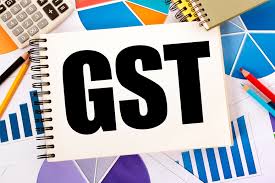Oct GST revenue hits new high at ₹1.3L-cr
Collections of the indirect tax, widely seen as a weathervane of economic activity, have exceeded ₹1 lakh crore for the fourth month in a row, after they plunged below the benchmark in June due to the devastating second wave of Covid-19.
The number is the latest of several indicators that highlight a recovery in the economy. Data released on Monday showed the Purchasing Managers’ Index (PMI) for manufacturing for the month of October at 55.9, the highest since February. And according to the Controller General of Accounts (CGA), which works under the ministry of finance, there has been an increase in direct tax revenue as well as central government spending in the month of September
Gross GST revenue in October this year is ₹1,30,127 crore, a 24% year-on-year jump and a 36% increase over October 2019, according to data from the finance ministry.
The highest ever GST collection of ₹1,41,384 crore was also reported this year -- in April ahead of the second wave of Covid-19, which resulted in lockdowns in many states across the country and lasted wholly or in part, through May.
Commenting on high GST revenue collection, the finance ministry said in a statement: “This is very much in line with the trend in economic recovery. This is also evident from the trend in the e-way bills generated every month since the second wave. The revenues would have still been higher if the sale of cars and other products had not been affected on account of disruption in the supply of semiconductors.”
E-way bills are an indication of volume of interstate movement of goods.
The revenues have also been aided due to the efforts of the state and central tax administration resulting in increased compliance over previous months. In addition to action against individual tax evaders, this has been a result of the multipronged approach followed by the GST Council,” the finance ministry added.
MS Mani, senior director at consulting firm Deloitte India said the high GST revenue in October is a result of continuing policy initiatives to improve compliance and discourage evasion.
The GST collection in October 2017 was ₹93,333 crore, in October 2018, ₹1,00,710 crore, in October 2019, ₹95,379 crore, and in October 2020, ₹1,05,155 crore.
The government recently introduced several measures to ease compliance such as nil-filing through SMS, quarterly return monthly payment (QRMP) system, and auto-population of return.
The government allows GST registered taxpayers to file nil returns through an easy process of SMS if they do not have any business activity in a specific period to check deliberate tax evasion. While, QRMP saves small taxpayers from paperworks by allowing them to pay tax every month but file returns quarterly, auto-population of returns pre-filled details of invoices making tax evasion difficult.
In the past year, the GST Council took various steps to discourage non-compliant behaviour such as blocking of E-way bills for non-filing of returns, system-based suspension of registration of taxpayers who failed to file six returns in a row, and blocking of credit for return defaulters.
Mani said: “In addition to various measures to streamline return filings, e-way bill generation etc, several restrictions placed on non-compliant taxpayers would also have resulted in many taxpayers gradually becoming more compliant and paying GST and filing returns promptly. Going forward, we may see more checks and balances being introduced to encourage filers and dissuade non-filers.”
Experts expect that the trend of strong revenue collection to be sustained.
Abhishek Jain, tax partner at consultancy firm EY India, said: “The robust GST collections are quite encouraging and a clear sign of economic recovery. With the ongoing festive season, we can expect similar or even higher GST collections in the coming months.”
October’s GST revenue correspond to transactions in September.
Experts say that expected reforms such as tax rate rationalisation and correction in inverted duty structure will push tax revenue further.
At the 45th meeting of the GST Council on September 17, the apex decision-making body on indirect tax matters took a decision on rationalising tax rates, and decided to correct duty inversions in textile and footwear sectors from January 1, 2022.
Download our App to get knowledge updates: https://play.google.com/store/apps/details?id=com.app.gstmitra



Comments
Post a Comment